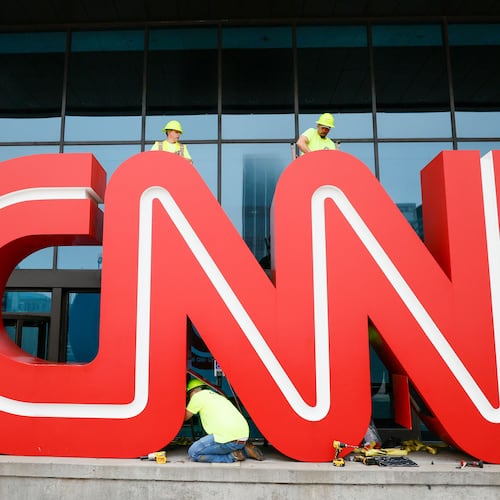Even if you’re not a fan, you’ve seen the spectacle of motorsports from stock car racing to world rally competitions to drag racing.
Formula One racing is the world’s most expensive sport, with vehicles alone costing tens of millions of dollars. Include salaries, research and development, marketing, advertising and transportation, and the total cost is in the hundreds of millions.
Why do automakers spend so much money on racing?
Many automakers have racing programs. Aston Martin, Audi, BMW, Cadillac, Chevrolet, Dodge, Ferrari, Ford, Honda, Infiniti, McLaren, Nissan, Porsche, Subaru, Toyota and many others have or have had some kind of racing program.
Credit: Special
Credit: Special
Audi and Cadillac are stepping up with new Formula One teams for the 2026 season.
Ferrari is synonymous with F1 racing and has been in the program since the sport’s 1950 birth.
The cash registers ring with billions and billions of dollars each racing season.
Credit: AP
Credit: AP
Automakers race to build fans and customers. According to Nielsen, Formula One has a current global fan base of 826.5 million. That’s about 90 million more fans than last year. In the U.S., the market increased by 10.5% from 2023 to 2024. Experts expect 2025 to be a growth year as well.
Blackbook Motorsport says F1 has 52 million fans in the U.S. New race venues in Las Vegas, Miami and Texas fuel some of the growth. The Netflix “Drive to Survive” docuseries has helped, too. It’s worth a watch.
Why spend all that money?
Credit: Special
Credit: Special
Some brands, like McLaren, exist to race, selling cars to consumers as an outgrowth of the racing program. The company’s street-legal cars feel almost like race cars with enhanced comfort and safety.
Mercedes-Benz fields one of the most dominant teams in motorsports thanks to big-name drivers and ultracompetitive cars. I asked Bradley Lord, Mercedes-AMG Petronas F1 Team representative, why Mercedes is so heavily invested in Formula One racing.
Credit: AP
Credit: AP
“Motorsport is, and has always been, core to what we do: we make road cars, and we make race cars,” he said. “Motorsport is a powerful platform for innovation and technological advancement. The challenge of racing pushes the boundaries of engineering and performance, allowing us to develop cutting-edge technologies that can be transferred to our road cars.”
Firsthand knowledge
I’ve seen this strategy up close. Last season, I attended an F1 watch party at Mercedes-Benz Stadium in Atlanta. The event included an impressive array of classic Mercedes-Benz vehicles, lots of food, modern and vintage race cars on display and giant television screens so fans could feel like they were in person at the Canadian Grand Prix. Well, almost. You couldn’t smell the burning rubber, but it was still an impressive display.
Credit: AP
Credit: AP
I drive a 15-year-old Saab 9-3. I like it, but by the end of that race, I found myself thinking about how I might scrape together the money to buy a Mercedes-Benz. The watch party felt like being in an exclusive club. I wanted in. (I resisted. I still have the Saab.)
Innovation and sustainability
I asked Audi why they’ve made a substantial F1 commitment for 2026. A spokesperson said, “Formula One has seen great growth in core markets — like the U.S., China and Europe — and among younger target groups. Given Audi’s long history in motorsport it’s also an authentic series for the brand to be involved with.”
The Audi spokesperson mentioned F1’s new sustainability rules. The 2026 season will require using sustainable fuels with the long-term goal of being carbon neutral by 2030. Current F1 cars use a gas/electric hybrid configuration.
It’s a similar story with Cadillac. “GM and Cadillac have been at the forefront of racing and winning in elite series for more than a century,” said John Roth, Global Cadillac’s vice president. “As Cadillac grows globally, racing in F1 and IMSA/WEC is an exciting way to build fans for the brand and compete against the very best luxury brands around the world.”
Is racing just about winning and gaining fans? Is there a benefit to the consumer versions of these companies’ cars and to the consumers themselves?
Mercedes’ Lord draws the connection between racing and the cars we all buy.
“Several Mercedes-Benz vehicles and technologies have benefited from the company’s racing experience,” Lord said. “The keyless ignition system, originally designed for race cars, is now a common feature in many Mercedes-Benz models. Other notable advancements derived from Formula 1 power train technology include the electric exhaust gas turbocharger found in models like the SL 43, and the highly advanced performance hybrid system utilized in the C 63 and GLC 63. And our engineers are working on cutting-edge future developments, too, like the recently announced prototype solid-state battery in the EQS.”
Many other safety features were either invented or refined through racing. Audi, Porsche and Subaru have used rally-derived all-wheel-drive systems to give their road cars an advantage. The steering-wheel mounted radio volume and cruise control buttons came from racing, as did anti-lock brakes. Rearview mirrors, seat belts, head restraints and many electronic innovations often have their roots in motorsports.
Is that worth the billions of dollars spent trying to be the best? The fans say, “Yes!”
Brian Moody is a senior editor of Kelley Blue Book and Autotrader and an automotive expert specializing in transportation, car shopping, electric cars, in-car technology and future vehicles.
The Steering Column is a weekly consumer auto column from Cox Automotive. Cox Automotive and The Atlanta Journal-Constitution are owned by parent company, Atlanta-based Cox Enterprises.
About the Author
Keep Reading
The Latest
Featured








